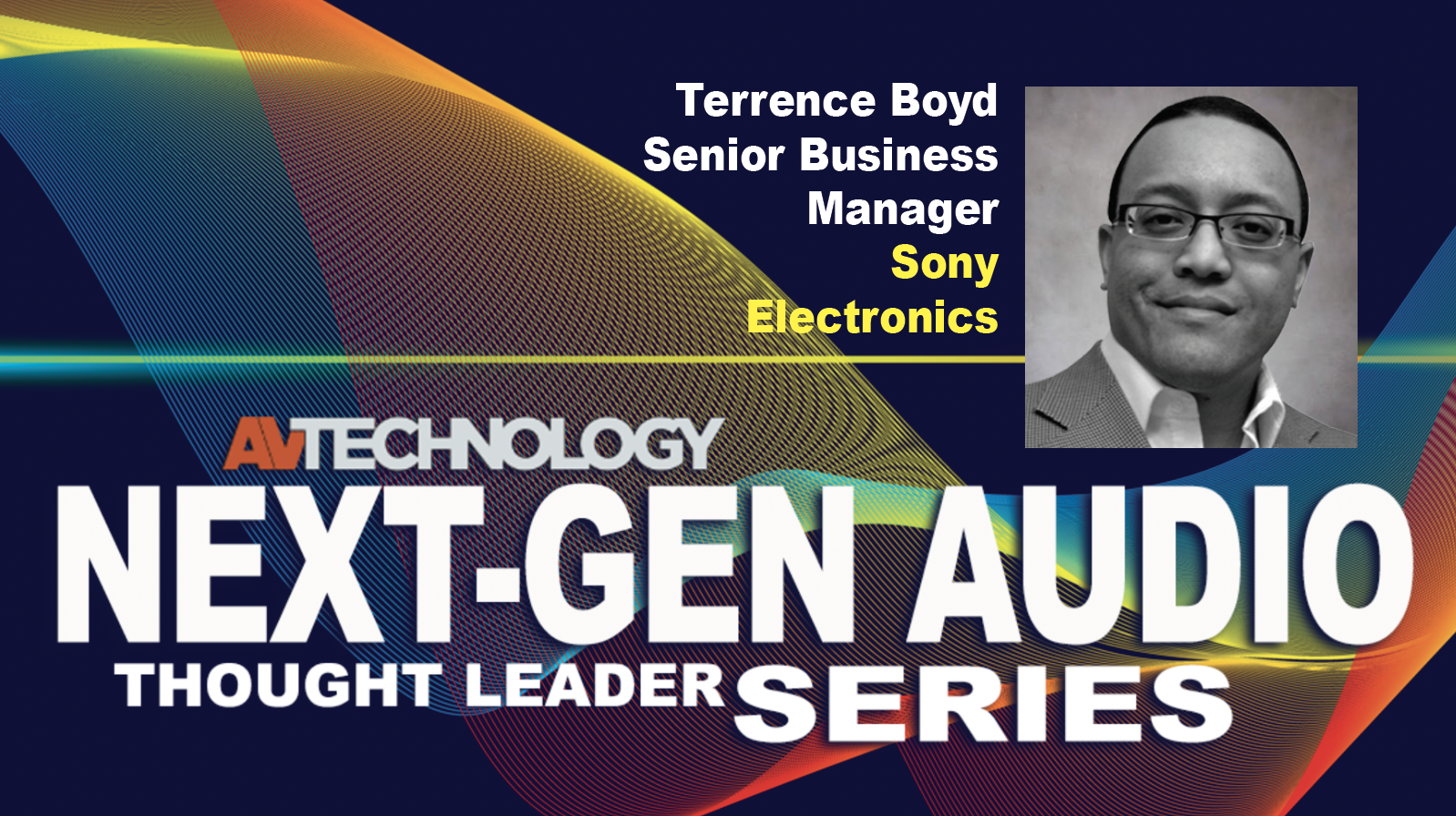On Next-Gen Audio: Sony Electronics
Terrence Boyd, Senior Business Manager at Sony Electronics shares insight into trends and best practices for implementing next-gen audio into meeting spaces and classrooms.

AVT Question: Please share insight and best practices for implementing next-gen audio into meeting spaces and classrooms.
Thought Leader: Terrence Boyd, Senior Business Manager at Sony Electronics
While video is often viewed as the most dynamic part of conferencing, without a proper audio setup communication would be virtually ineffective. Conducting a lecture or meeting with a presenter or participant whose audio is unstable is a non-starter.
When implementing a new audio setup, there are many considerations for choosing the most effective solution for your environment, needs, and objectives. The most important consideration is a good network connection to maximize your ability to communicate. Next, understand the space you’re working with: Is it a large conference room, a small classroom, a lecture theater, or even your home office?
Consider how many participants are a part of the lecture or meeting, and whether they’re located in the room, off-site, or hybrid." —Terrence Boyd, Senior Business Manager at Sony Electronics
Different microphones, headphones, and speakers are optimized for different room sizes, setups, and acoustics. Consider how many participants are a part of the lecture or meeting, and whether they’re located in the room, off-site, or hybrid. Additionally, while we’re typically looking for ways to make sure everyone can hear the speaker with the same clarity, there are instances where the opposite is necessary. In some cases, discussions are private, and you want to ensure a sensitive conversation can only be heard by the appropriate parties.
Once you’ve gained an understanding of your needs and goals, it’s time to put a technology framework together. This is when it’s helpful to understand the benefits of specific audio solutions. To increase intelligibility, consider a beamforming ceiling microphone with advanced speech reinforcement like Sony’s MAS-A100, which frees presenters from the constraints of lavaliers and handheld mics and reduces feedback and ambient noise. For rich, powerful sound that supports large display technologies, consider Sony’s SLS-1A powered line-array speaker, which through its unique proprietary driver design minimizes sound distortion and enables beam steering to accurately control the direction and angle of sound delivery throughout the listening area.
And when all else fails, check to make sure you’re not on mute!
A daily selection of features, industry news, and analysis for tech managers. Sign up below.

Cindy Davis is the brand and content director of AV Technology (AVT). She was a critical member of the AVT editorial team when the title won the “Best Media Brand” laurel in the 2018 SIIA Jesse H. Neal Awards. Davis moderates several monthly AV/IT roundtables and enjoys facilitating and engaging in deeper conversations about the complex topics shaping the ever-evolving AV/IT industry. She explores the ethos of collaboration, hybrid workplaces, experiential spaces, and artificial intelligence to share with readers. Previously, she developed the TechDecisions brand of content sites for EH Publishing, named one of the “10 Great Business Media Websites” by B2B Media Business magazine. For more than 25 years, Davis has developed and delivered multiplatform content for AV/IT B2B and consumer electronics B2C publications, associations, and companies. A lifelong New Englander, Davis makes time for coastal hikes with her husband, Gary, and their Vizsla rescue, Dixie, sailing on one of Gloucester’s great schooners and sampling local IPAs. Connect with her on LinkedIn.
